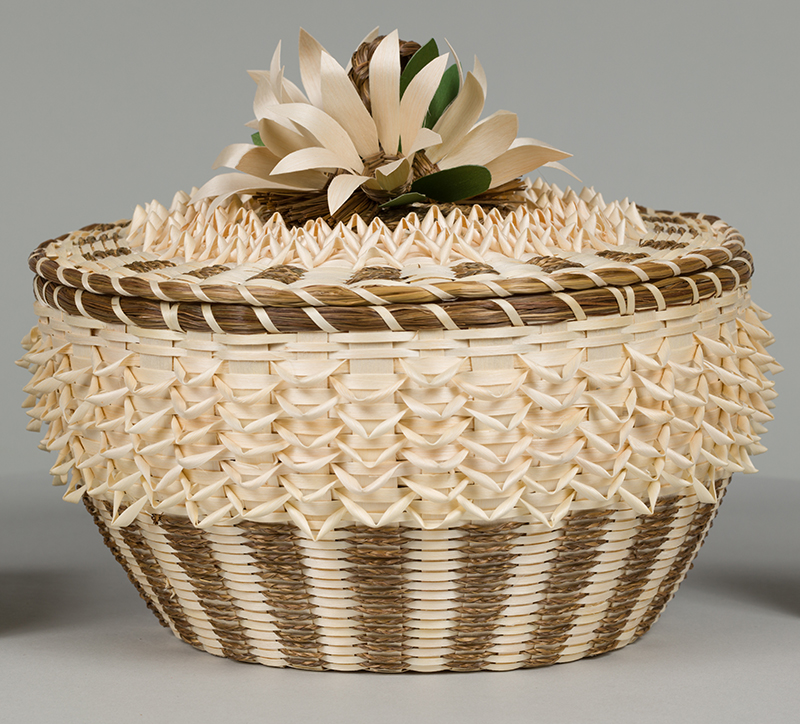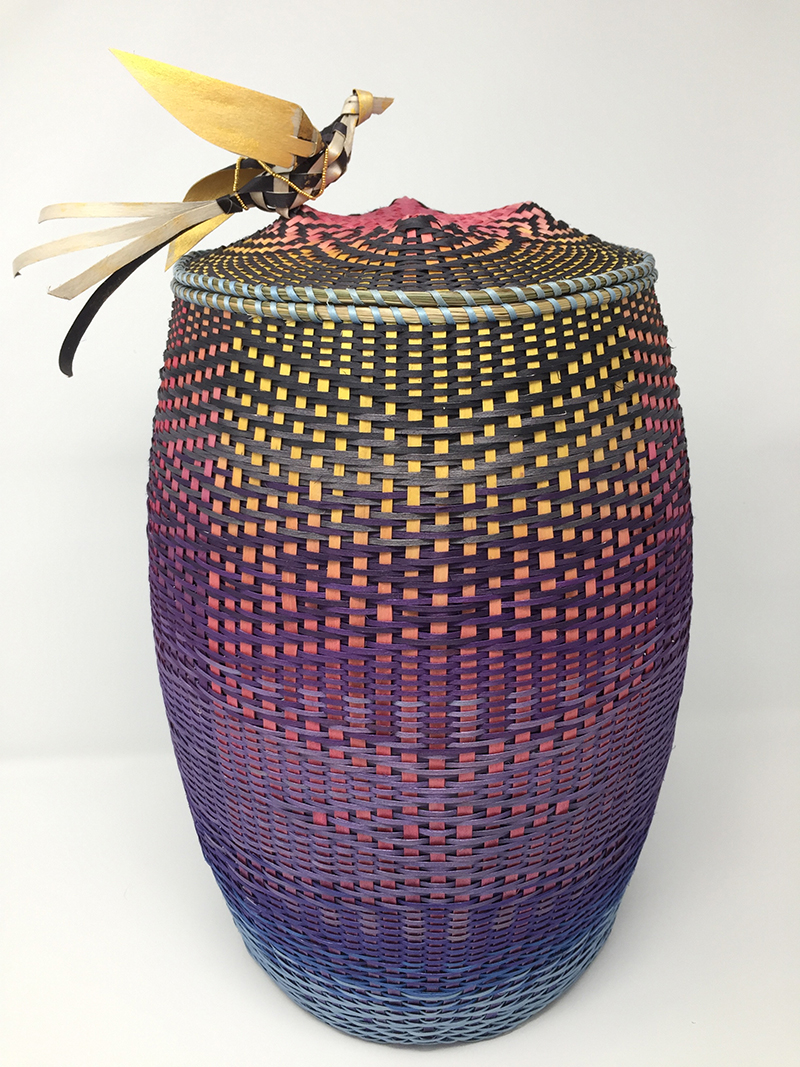Dates:
Location:
Markell Gallery
Explore the online component of this exhibition
This online supplement for Innovation and Resilience Across Three Generations of Wabanaki Basket-Making is intended as a companion to the exhibition in the Bowdoin College Museum of Art. The exhibition was curated by members of the Native American Students Association at Bowdoin College: Amanda Cassano ’22, Sunshine Eaton ’22, and Shandiin Largo ’23.
Selected Work

Apikcilu Binds the Sun, 2018, ash, sweetgrass, commercial dyes, acrylic ink, 24k gold-plated beads, by Geo Soctomah Neptune. Museum Purchase, The Philip Conway Beam Endowment Fund. Bowdoin College Museum of Art.
About
The exhibition seeks to highlight the dynamic tradition of Wabanaki basket-making, reflecting Abenaki, Penobscot, Passamaquoddy, Maliseet, and Micmac artists’ unique styles and designs. The exhibition brings together historical and contemporary baskets, which represent some of the finest examples of Wabanaki artistry in recent times. While the Wabanaki have been weaving baskets since time immemorial, when Wabanaki were forced off their land under European colonization, basketmaking became a means of economic independence and resistance to assimilation. In the nineteenth and twentieth centuries, Wabanaki artists innovated traditional utilitarian forms to meet tourists’ tastes, leading to a new and vibrant style of basketmaking—fancy baskets.
While basket-making continues to be a source of economic empowerment for Wabanaki communities, basket-making remains a powerful form of individual artistic expression and vehicle for sharing generational knowledge. Over the past few generations, artists such as Molly Neptune Parker, Clara Neptune Keezer, and Fred Tomah have significantly influenced young generations of basket-makers, shaping the path of Wabanaki basket-making traditions for generations to come.
In addition to reconnecting with Indigenous forms of artistic and cultural expression, Wabanaki basket makers have partnered with natural resource managers and forestry scientists to create the Ash Task Force. In this way, community members and scholars are working to de-colonize Western academies and systems that have ignored the value of Indigenous knowledge and culture. The Ash Task Force works to combat an invasive beetle called the Emerald Ash-borer, which threatens the future of Wabanaki baskets’ primary material, brown ash. In protecting and promoting Indigenous artistry and culture, the process of de-colonizing Western and Eurocentric systems of knowledge has begun.
Programs
Conversation with Artist Geo Neptune
Geo Neptune, renowned Passamaquoddy master basket-maker, activist, and educator, discusses their basket-making practice. The conversation is moderated by Amanda Cassano ’22, and Shandiin Largo ’23, two of the student curators of the exhibition, "Innovation and Resilience Across Three Generations of Wabanaki Basket-Making." Presented by the Bowdoin College Museum of Art.
The program was recorded on February 3, 2022.

